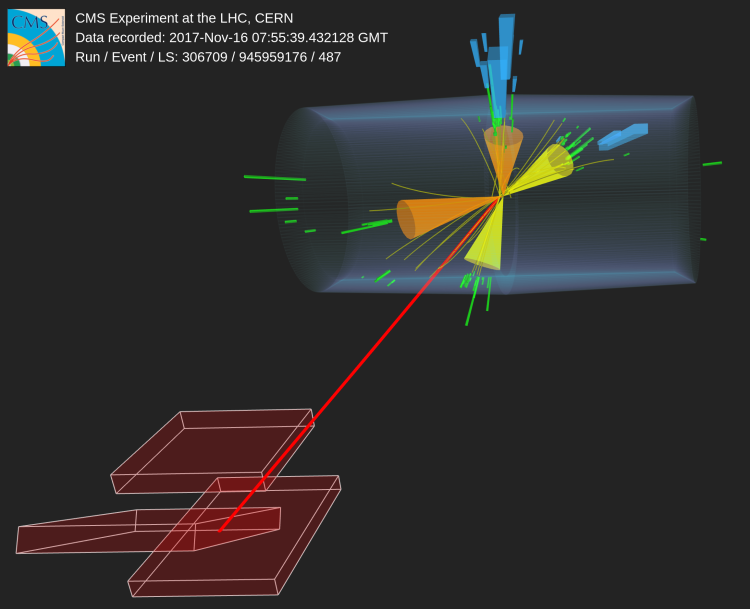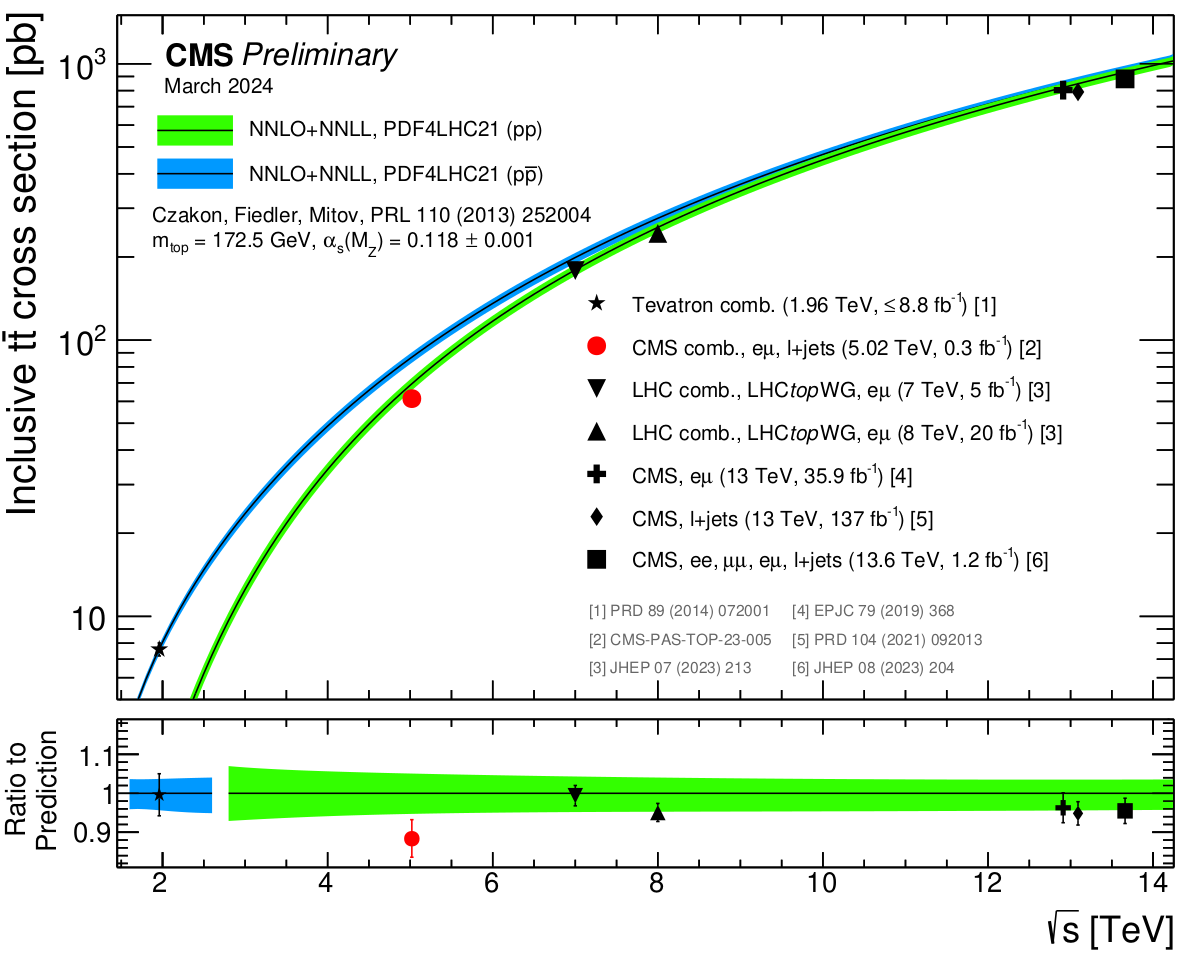
Following its mission to address fundamental questions about Nature, the Large Hadron Collider (LHC) has operated at different center-of-mass energies, colliding protons and/or heavy ions. In heavy ion collisions, the nucleons (protons and neutrons) composing the ions collide with each other at energies smaller than those of the proton-proton (pp) collisions. During 2015-2018, protons typically collided at 13 TeV while the heavy ion beams collided at 5 TeV per nucleon pair. To bridge this energy gap and understand better the fundamental physics behind different operating conditions, the LHC also includes in its programme special pp collision runs matching the energy of the heavy ion runs.
A major part of the LHC physics program is to scrutinize the standard model (SM) of particle physics to ultimate precision. The top quark is the heaviest known particle and it is mainly produced in pairs (top-antitop quarks) with a relatively high production rate at the LHC, in proton-proton collisions. In November 2017, the LHC operated with 5 TeV pp collisions, to provide a reference for the studies of heavy-ion collisions collected in 2018. “This was a unique opportunity to study the production of top quark pairs at a new collision energy”, said Javier del Riego, a PhD student from the ICTEA-University of Oviedo who works in CMS, one of the LHC experiments, and tests the SM through top quark studies.
The measurement was performed with one lepton in the final state and improves the final precision by incorporating previously published results with at least two leptons in the final state. The relatively low recorded luminosity was sufficient to produce a precise value, which can be compared to results at other energies. This measurement of the top quark pair production cross section, in 5 TeV pp collisions, 61 ± 3 pb, bridges the gap between the energy regime explored at the Tevatron (2 TeV) and the nominal LHC collision energies, thereby testing the SM predictions in an intermediate regime. The measured value is compared with other measurements and with state-of-the-art theoretical predictions in Fig. 1, as a function of the (nucleon-nucleon) collision energy. This result represents an improvement in precision by approximately 8% with respect to the previously released CMS result at the same collision energy. “This result is useful not only to check the validity of the SM over a broader energy range but also to better understand the inner structure of the proton”, added Javier del Riego.

![]() Figure 1: Inclusive top-antitop cross section as a function of the collision energy. The new measurement is displayed with a red marker. The bottom panel shows the ratio between the measurements and the SM predictions.
Figure 1: Inclusive top-antitop cross section as a function of the collision energy. The new measurement is displayed with a red marker. The bottom panel shows the ratio between the measurements and the SM predictions.
Read more about these results:
-
CMS Physics Analysis Summary (TOP-23-005): "Measurement of the inclusive tt cross section in the lepton+jets channel and combination with the dilepton channel at 5.02 TeV with 2017 data "
-
Display of collision events: CERN CDS
-
@CMSExperiment on social media: LinkedIn - facebook - twitter - instagram
- Do you like these briefings and want to get an email notification when there is a new one? Subscribe here

